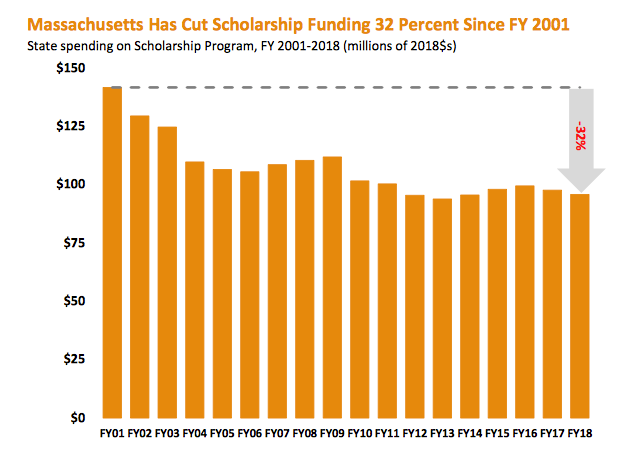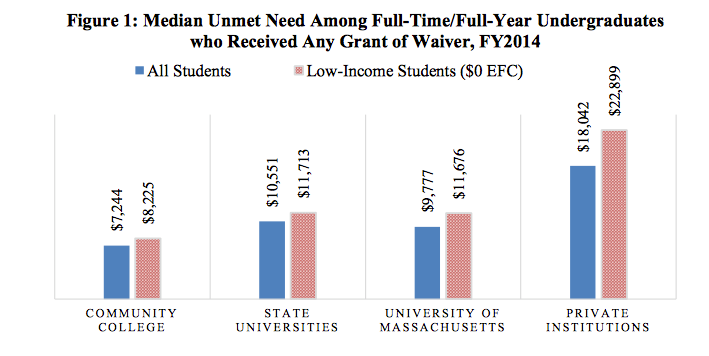Paying for College in Massachusetts
By Anise Vance
May 17, 2018
With college graduation season in full swing, we thought we'd take a quick look at higher education in Massachusetts with a focus on financial aid. Pursuing—and completing—a college degree is among the wisest decisions a person can make. Students learn a wide range of skills that serve them in many aspects of life, and completing college can mean earning an extra half million dollars over the course of one's career. And the value of a college degree is only increasing: Over the last two decades, the gap between the hourly earnings of young adults with a college degree and those without a degree has widened considerably.
The good news is that local programs, like the Success Boston college completion initiative, have helped 52 percent of Boston Public School students who enrolled in college complete a degree, up from 39 percent a decade ago. But financing college remains a tremendous challenge for students across a broad range of income groups.
In Massachusetts, funds for state scholarship programs have been dwindling over the past 20 years. Since FY 2001, Massachusetts has cut total scholarship funding by 32 percent per student, according to the Massachusetts Budget and Policy Center. This is part of a broader trend: Overall state support for public higher education has been reduced by a similar rate of 32 percent since FY 2001.
Cuts in direct support to campuses and student aid programs are key drivers of the spiraling cost of attending college. In FY 2014, low-income households paid between $8,225 and $11,676 for one year of full-time attendance after taking financial aid into account.
Unfortunately, even the funding that is available is often hard to access. A quick glance at web pages for Massachusetts financial aid shows just how difficult the state financial aid system can be to navigate. There are 31 different financial aid programs in Massachusetts and 41 programs that offer tuition waivers. Because there are so many different programs, total available aid is spread thin across them. MASSGrant and Cash Grant, for example, are the state’s two largest programs serving low-income students but only offer median awards of $600 and $550, and applicants are required to apply to both programs.
Given these challenges, here a few key strategies that could strengthen the financial aid system in Massachusetts:
- Streamlining our current financial aid system to make it easier for students and families to apply;
- Making it a statewide priority to increase spending on higher education; and
- Educating prospective students and their families about how much college actually costs to encourage students to apply to universities they might think are out of their financial reach. (The sticker price is often much higher than what many students, especially low-income students, actually pay.) This tool, which focuses on private universities, is one example of an easy way to estimate the real costs of college.


